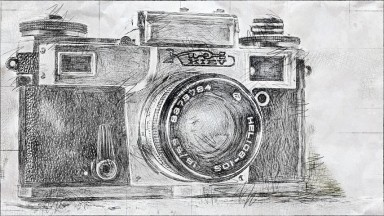Analysis of The Work of Art in the Age of Mechanical Reproduction
Walter Benjamin's concept of the Cult Value and Exhibition Value of Art

Cult Value and Exhibition Value in “The Work of Art in the Age of Mechanical Reproduction”
Walter Benjamin in The Work of Art in The Age of Mechanical Reproduction undertakes a brilliant analysis of the changing nature of art with the change in technology of production by tracing its socio-economic causes and hinting at possible political consequences. One argues that Benjamin’s insightful analysis with its delineation of the concept of aura and the cult value and exhibition value of art finds its full expression digital reproduction of art in the Internet Age.
According to Benjamin, cult value of a work of art resides in it not being seen frequently whereas exhibition value resides in its opposite. Whereas it was the cult value of art that had been predominant for a significant portion in history, the modern world with its mechanical reproduction has given precedence to exhibition value and that the quantitative increase in art production has consequently resulted in a qualitative shift in the nature of art itself. While Benjamin located the cult value in the ritual and exhibition value in politics, one may be aware of the fact that the two are not necessarily different in their relation to something very intimately related to a work of art : the idea and the use of power. Furthermore, not only did the idea of art originate in the service of a ritual as stated by Benjamin, it was also serviced by the ritual, in that, the exclusive nature granted to art (distinct from other human activities) bears a certain distance and inaccessibility which goes into the creation of aura which Benjamin is concerned with. This is true not only of the choral masters of mediaeval Europe as such but also of the various dance forms that grew in temple towns of India.
” Mechanical reproduction emancipates the work of art from its parasitical dependence on ritual… Instead of being based on ritual, it begins to be based on another practice- politics.”
Clearly, Benjamin here is dealing with politics in its modern sense of mass politics as emerged in the 20th century, for arts and politics (in an ahistorical sense) has interpenetrated each other and the various rituals in which art was often appropriated served very political purposes . The cult value of art tended to conceal it precisely because of the power it wielded. The Burkean idea of the Sublime and use of obscurity in the “barbarous temples of the Americans” who placed their idols in a dark part of the hut to keep people under control bespeaks of the power-play in the very ritual from which the cult-value of art ( the idol in this case) is effectively obtained.
The exhibition value of art presupposes a mass towards whom art may be exhibited. Whereas the cult value of art relied on religion , which is essentially politics of the few ( the priest-king in this case) , exhibition value relies on the politics of masses, and perhaps no point in history would’ve been as conducive to the spurt of exhibition value of art as late 19th early 20th century Europe where the rise of nation states and consumerism coincided and converged . The pronounced expression of exhibition value opens up an immense scope for vested politico-economic interests : two clear examples being the use of propaganda films by Nazi Germany and use of in-movie advertisement of today’s Bollywood. The exhibition value of art in the age of mechanical reproduction runs the risk of being appropriated by the very powers which informed its cult value in the first palce. The aesthetization of politics in the form of war by Fascism in the essay’s epilogue gains immense significance in this context, especially if one is to factor in Bertrand Russell’s similar misgivings about the new fascist mentality which “mechanical power” tended to nourish.
Benjamin’s ideas about the changing nature of art in the age of mechanical reproduction reaches its culmination in the digital reproduction of art in the internet age. The pronounced accent on the exhibition value of art and the respective receding of its cult value is nowhere as evident as in the internet age where many forms of art exist solely by virtue of its exhibition value. Here, the very famous line requires re-evaluation :
” Even the most perfect reproduction of a work of art is lacking in one element: its presence in time and space, its unique existence at a place where it happens to be.”
Digital art in the internet age is everywhere at any given time, thus subverting the idea of a “unique time and space” that a work of art supposedly occupies. This has been analysed to some extent by Davis Douglas.
Further, if mechanical reproduction resulted in the “withering of aura”, digital reproduction decreased that vital distance between artwork and the recipient to such an extent that the viewer had a hitherto unprecedented say in its reception : the cult value further recedes in the background and the exhibition value and its perception is modulated by the mass responses which mutually inform one another. This is but a logical extension of what Benjamin has to say about the impact of mechanical reproduction on reception of art :
” the individual reactions are predetermined by the mass audience response they produce…The moment these responses become manifest, they control each other”.
Presenting art and the responses they elicit on online platforms expedites the interchange of cult value with exhibition value by making the expression of response to art open to unprecedented mass of people through social media. The idea of releasing trailers of movies and the consequent approval-disapproval is nothing but an example of Benjamin’s theory in practice. Moreover, the anti-cult position of critic which the camera-viewer had taken in the mechanized age is greatly enhanced in the digital age where online platforms allow the viewer not only to comment on what they see but also make their comments known to all and sundry. The like-share-comment-subscribe paradigm unsurprisingly permeates throughout platforms ranging from Instagram to YouTube. Digital platforms are a culmination of Benjamin’s take on the changing relationship of art to mechanical production which had on hindsight, been in its technological infancy. What we see today is, as it were, a further extension of the role of the viewer as a critic in an age where the exhibition value of art has has vastly surpassed its cult value.
In the digital age where mandates and markets come to reside in masses, the heightened exhibition value of art gets further pronounced due to the change in the pattern of patronage. Benjamin’s ideas about the sterility of expression in Fascist forms of government may be coupled with his ideas on the exhibition value of art to reach similar conclusions for art in the digital age. Since the act of exhibition is at the core of exhibition value of art and since exhibition is itself a form of expression, online creative platforms like Canva, Lumen, Spotify and social media platforms like YouTube and TikTok allow the masses to express themselves without changing property relations and provide a veneer of agency to the masses while keeping them in a “state of sweet subjugation” where they are both consumers of the platforms and more importantly become products presented by the platforms for various commercial and political advertisers.
With the dawn of the fourth industrial age on the horizon, technologies like Augmented Reality, 3D Printing and Immersive Technologies will, as Benjamin stated about the revolutionary nature of photography, further change the very nature of art as we know it. What direction will it take vis-a-vis the cult value and the exhibition value of art remains to be seen.
Works Cited and Referred
1. Benjamin, Walter – The Work of Art in The Age of Mechanical Reproduction , Illuminations, Sochen Books
2. Russel, Bertrand – Power, Routledge Publication
3. Burke, Edmund – A Philosophical Enquiry into the Origin of Our Ideas of the Sublime and Beautiful, Project Gutenberg
4.Malina,Roger F.- Digital Image: Digital Cinema: The Work of Art in the Age of Post-Mechanical Reproduction, The MIT Press
5 Leonardo, Davis Douglas – The Work of Art in the Age of Digital Reproduction, MIT Press
6. County, Arianne – They have eyes that they might not see : Walter Benjamin’s Aura and the optical Unconscious, Oxford University Press





